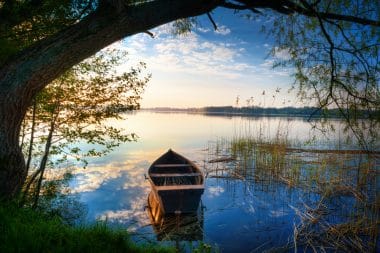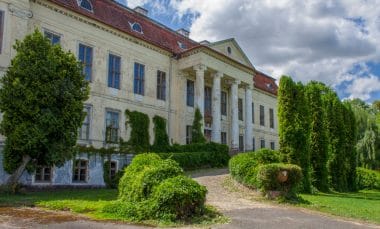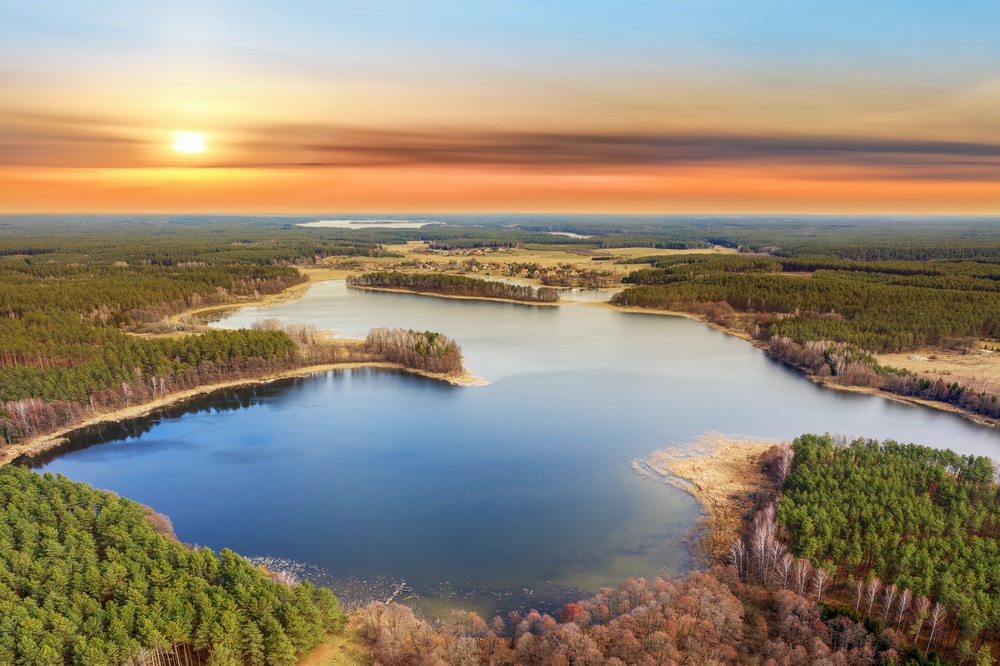Masuria (Mazury) has hardly appeared internationally as a travel destination so far. Wrongly, because the landscape in the north of Poland still offers a dreamlike, almost unspoilt nature, in which visitors can relax wonderfully with a wide variety of leisure activities. With its forests, rolling hills and the fantastic Masurian Lake District, the region, which used to be part of East Prussia and belonged to the German Empire, is an ideal destination for nature lovers.
General information about a holiday in Masuria
Masuria is a landscape of around 10,000 km², which has so far attracted the majority of locals. The capital of the area is the former Olsztyn (now Olsztyn) with 171,000 inhabitants. The historic city offers a variety of historical monuments, so that tourists interested in culture and art will definitely get their money’s worth here. The Masurian Lake District with its “thousand lakes” is an absolute paradise for all kinds of water sports. Whether by houseboat, on a canoe tour or a sailing trip, active holidaymakers will be thrilled by the excellent conditions, especially since there is always plenty of space on the water. As is well known, this is not always the case on other waters. For Masuria, insiders often use the phrase “More lakes than boats”!
The most beautiful holiday activities in Masuria

Masuria is considered one of the last, almost untouched natural landscapes in Europe. If you want to discover them, the best way to do so is on a kayak tour, on horseback or by bike. If you decide to use the bicycle as a means of transport, you have to know that pure cycle paths in this part of Poland are only slowly being established and you will usually be on roads with little traffic. However, this does not detract from the enjoyment of driving over ancient, winding avenues, for example. If you are interested in a paddle tour, you will find one of the most beautiful routes in the country on the 100 km long Krutynia River. A great way to get to know Masuria and the local flora and fauna.
The approx. 3000 lakes of the Masurian Lake District are partly connected to each other by canals with many locks. The entire scenery, which you can experience up close on the waterways, is wonderfully idyllic and has a decelerating effect. The famous Masurian Canal, which was never completely completed and was actually supposed to connect Masuria with the Baltic Sea , is extremely popular among water sports enthusiasts. Especially during the Polish school holidays in summer, however, there are a lot of boats here. If you don’t want to be a captain yourself, you can also take part in one of the many excursions offered by the ships of the so-called White Fleet and enjoy the surroundings on board in a relaxed way.
For hikers, the Johannisburg Heath (Puszczta Piska) is also an excellent holiday area. In the largest forest area in Poland, you can either take part in a guided tour or explore the area on your own. Anyone who likes to be out and about on foot is guaranteed to be thrilled. The Rominc Heath in the border area between Russia, Lithuania and Poland was once the favorite hunting ground of Kaiser Wilhelm II. An original wilderness still prevails here, which gives trekking tourists unforgettable experiences.
East Prussia is the home of the Trakehner and a destination of longing for many enthusiastic riders. Riding through the endless forests on horseback can actually come true here, as numerous farms specialize in this type of tourism. Horse fans should not miss a visit to the Trakehner Stud Liski, which was founded in 1732. Animal lovers can also be recommended the Popiellnen nature reserve, where several herds of Konik horses live, which are directly descended from wild horses. There is also the only beaver farm in Poland and a deer park on the site.
Sights in Masuria

Even though the unique nature is the most important reason for most visitors to stay in Masuria, tourists interested in culture will not miss out here either. A visit to the baroque Dönhoffstädt Castle in Drogosze should definitely be on the program. The current complex was built in the early 18th century and, with a façade length of almost 100 m, was the largest residential palace in East Prussia. Today, the building is privately owned and can also be entered for a small fee.
As part of German history, the “Wolf’s Lair”, one of several headquarters of the “Führer”, regularly attracts tour groups and individual holidaymakers. The huge complex included various massive bunkers, countless outbuildings, its own railway connection and two airfields. Due to perfect camouflage, the area, which is located deep in the forest near Rastenburg and was at times inhabited by 6000 people, was never bombed.
One of the most important castles of the Teutonic Order, which was built in the 14th century in Olsztyn, today’s Olsztyn, is also on the must-see list for many tourists to Masuria. The building, which was managed by Nicolaus Copernicus, among others, has housed a museum since the 1920s. One of the most impressive exhibits is the only surviving astronomical instrument, which was constructed by Copernicus himself.
The Owczarnic Open-Air Museum is a great place to learn about life, traditions and culture in the area, as it gives visitors a great insight into a wide variety of areas.
The unknown Masuria is an ideal destination for people who want peace and quiet and contact with unspoilt nature at their holiday destination


